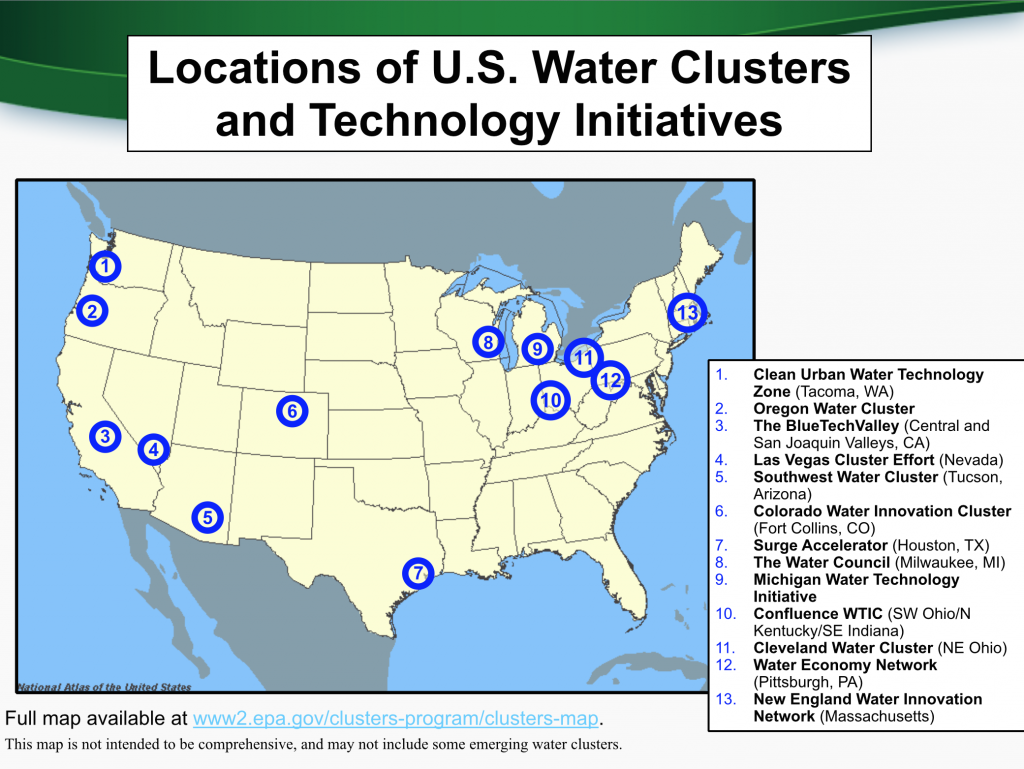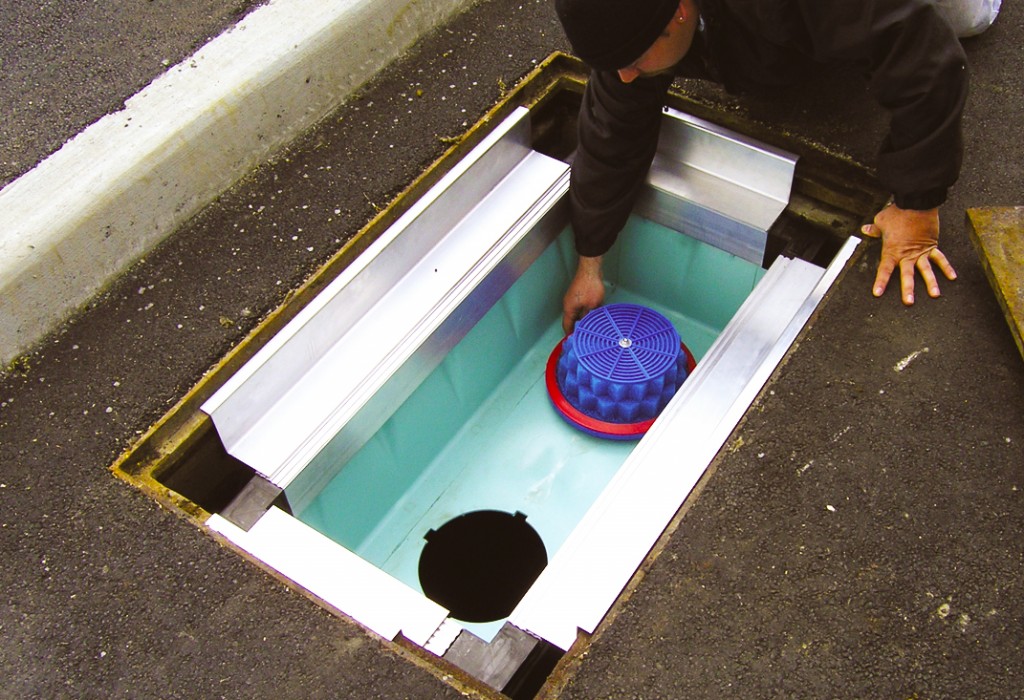Water management is one of civilization’s oldest and most universal needs. Homes and businesses must be provided with clean water. Stormwater must be responsibly carried out of our urban centers. A decaying infrastructure must be updated with new technology despite the lack of revenue or appetite for investment. Increasingly obsolete regulations must be reimagined to reflect the new face of water pollution. Population growth must be accommodated. And the effects of climate change must be mitigated as they emerge. Water matters. It is an economic keystone which determines the performance of many pivotal Washington State industries, from agriculture and tourism to manufacturing and mining.
A group of water technology experts and water industry leaders from around the country met this month at the Tacoma Convention Center for the Third Annual Wellspring Conference. The two day program centered on various issues facing clean water technology, the impact of regulations on science and production, building lasting relationships between stakeholders, and charting a course to propel further growth in this industry.
Washington State: Water Technology Hot Spot?
“Clean water technology is not strictly an engineering problem,” said Joel Baker, Science Director of the UW Tacoma’s Center for Urban Waters. “It’s as much a social and political science issue as a natural science one. The people, the political systems, and social structures are what really determine outcomes.” Baker stressed how water management goes beyond hard science issues into questions around governance and regulation that defy easy answers. He explained how Tacoma’s water innovation cluster was made possible through the actions and investments of local government. “The Port & City invested in human capital skilled in and knowledgeable about the water industry.”
The feats of environmental engineering required to provide communities with safe and abundant water access often go unappreciated. Though that’s not the case though at the UW Tacoma’s Center for Urban Waters. Tacoma is a hub of R&D surrounding water management products and services, and was recently recognized by the New York Times for forensic water quality research being conducted by the Center in coordination with the City.
Economic Development Through “Innovation Clusters”
These days every region wants to replicate the success of Silicon Valley, an engine of innovation and high-growth businesses. The real Silicon Valley’s booming innovation economy grew out of the concentration of interconnected businesses, suppliers, R&D centers, and training providers.
 When Egils Milbergs was leading the Washington Economic Development Commissioned, Washington State emerged a national leader in cluster-based economic development strategies. In 2007, Governor Gregoire signed a bill from the legislature creating Innovation Partnership Zones. A cluster-based economic development effort that the state Department of Commerce describes as a partnership between “research, workforce training, and private sector participation in close geographic proximity to promote cluster development and collaboration in a research based effort that will lead to new technologies, marketable products, company formation, and job creation.” There are currently 15 designated IPZs.
When Egils Milbergs was leading the Washington Economic Development Commissioned, Washington State emerged a national leader in cluster-based economic development strategies. In 2007, Governor Gregoire signed a bill from the legislature creating Innovation Partnership Zones. A cluster-based economic development effort that the state Department of Commerce describes as a partnership between “research, workforce training, and private sector participation in close geographic proximity to promote cluster development and collaboration in a research based effort that will lead to new technologies, marketable products, company formation, and job creation.” There are currently 15 designated IPZs.
According to Milbergs, there are four important factors that make up the “soft infrastructure” necessary to launch an innovation cluster: “leadership, strategy, governance, and culture.” Milbergs said business leadership is critical to pulling off an innovation cluster. By strategy, a cluster needs more than words on paper, but genuine buy-in from multiple stakeholders who feel ownership of the cluster, the strategy, and the key performance indicators which drive it. Governance, for Milbergs, refers to “provides a home for strategy and leadership… There’s got to be some mechanism that governs how each cluster will evolve.” Finally, Milbergs says that a cluster must be animated by the spirit of collaboration. “The culture must support the idea that there’s benefit from collaboration.”
Soft infrastructure is just part of the recipe though. A world-class innovation cluster requires hard assets like universities, production plants, and R&D equipment.
Sally C. Gutierrez, Director of the Environmental Technology Innovation Clusters Program for the EPA appeared before the Tacoma conference to define the innovation cluster strategy and explain how it relates to water management. Gutierrez defined “innovation clusters” as “dense, regional networks of firms and other groups in the same industry.” She said that “cluster organizations fast-track innovation by connecting researchers, business partners, and end users.”
A leader of New England’s water innovation cluster was present to share his perspective. Michael Murphy is Director of Water Innovation at the Massachusetts Clean Energy Center. He stressed how essential it is that clusters be business-driven. Murphy argued that “moving forward on the backs of private sector actors” is the only route to a viable cluster. Also important, Murphy said, are clear value propositions and diverse engagement from multiple stakeholders.
- Reverse osmosis desalination plant in Barcelona, Spain
Adapting to a Drier World
The reality of climate change is creating new water management challenges and intensifying old ones. Droughts and wildfires are already negatively impacting people, agriculture, energy, and ecosystems. Nobel laureate Steven Chu, director of one of the US government’s leading research facilities, judged that “diminished supplies of fresh water might prove a far more serious problem than slowly rising seas.” The United Nations estimates that 1.8 billion people will live in regions with absolute water scarcity by 2025.
Glenn Schrader, an Associate Dean of the Chemical & Environmental Engineering Department at the University of Arizona, spoke to how climate change is already changing the water situation in the Southwest U.S. “We’re going to be the poster child for climate change and the resultant water scarcity,” Schrader said. The demand for inland desalination plants has risen dramatically in recent years, changing the profile of the water management industry.The effects of this new water scarcity can be seen across the region. “In New Mexico, 150 year old farms can’t irrigate their land anymore.”
Better Design, Better Outcomes
Today’s water pollution is distributed differently than it was forty years ago when the U.S. Safe Drinking Water Act was passed. Point source pollution (pipe spewing into the river) has largely been eliminated. But nonpoint source pollution has emerged as an insidious and difficult to regulate problem. Data provided by a former EPA administrator reveals that, while 40 years ago industrial pipes contributed 85 percent of water pollution, today 85 percent comes from stormwater and the runoff from farmers’ fields. This water end up in bodies like the Puget Sound.
Sanjay Kapoor, Principal of s2 Sustainability Consultants, conducted a Lean analysis of stormwater regulations for the Washington Business Alliance (WaBA) titled Better Design, Better Outcomes: Applying Lean Design to Stormwater Regulation.
In Kapoor’s study, WaBA convened relevant business leaders, Lean experts, and bureaucrats at all layers of government to create a process map for a particularly tangled stormwater regulation case study.” Most in the room were surprised by magnitude of what process was,” Kapoor said. “How many governments and agencies were engaged? How many thresholds of what constitutes water quality were engaged? There was considerable fragmentation.” Kapoor investigated the “regulatory spaghetti” which can complicate compliance without improving water quality. “The opportunities for improvement are considerable.”

The report’s approach to improving water quality and the regulatory climate calls for harnessing the potential of low impact development (LID) techniques. LID is a land planning and engineering design approach to stormwater that focuses on managing the runoff as close to the source as possible. Many practices fit into the LID approach, but generally LID is marked by an effort to minimize or prevent concentrated flows of stormwater from leaving a site. When impervious surfaces (concrete, etc.) are used, they are periodically interrupted by pervious areas which absorb the stormwater.
In order to address the challenges of multiple requirements and governments, Kapoor put forth what he calls the “one water” approach; “to re-present compliance with numerous permits as striving for water quality in totality.” Washington currently operates under a different water standard for water discharged to state waters vs. water discharged to federal waters vs. water discharged to waters that serve as habitat for endangered species. The WaBA study recommends streamlining the process with multi-agency permitting teams, unified and scalable fees, and creating a single point of contact for compliers.
Robert Adair, President of Convergent Water Technologies, said that “by replicating natural processes through constructed systems. LID can be both better and cheaper” – an appealing proposition for both business and environmentalists. Kapoor stressed the primacy of water quality. “If we are applying for a permit,” he said, “then we’ve already failed. Permits are actually a permission to pollute.” Kapoor’s question: “How can we redesign the process to encourage the elimination of discharges and avoidance of permits?”
“This is landscape-level problem that demands a landscape-level solution,” Adair said. “It’s not Boeing or Port of Tacoma or WSDOT — It’s the whole landscape that we’ve built.” Kapoor also stressed the need for system-level solutions. Kapoor quoted Amory Lovins, Chief Scientist of the Rocky Mountain Institute to explain “why we must look at the process in its entirety.”
In Lovins’ words:
“Optimizing components in isolation tends to pessimize the whole system—and hence the bottom line. You can actually make a system less efficient while making each of its parts more efficient, simply by not properly linking up those components. If they’re not designed to work with one another, they’ll tend to work against one another.”
Regulation is often necessary, Kapoor acknowledged. “The regulatory mechanisms are successful at combating point source, but ill-equipped to deal with non-point pollution.” A different mechanism is needed to combat non-point pollution because the problem itself is so decentralized.
Building a National Water Technology Network
Throughout the conference, a persistent theme was the need for unifying regional water innovation clusters under a national water technology network. Kristen Sawin, Vice President of Government Relations at Weyerhauser commented that “the lack of national standards and permitting reciprocity across states for regulatory acceptance lead to high costs and lengthy time frames for testing and approval.” In other words, business is already paying the price of not having a national network. Schrader of University of Arizona agreed. “I’m very much in favor of a national network organizing and coordinating water innovation clusters across North America,” he said.
Water is not just a pollution issue — it’s also an economic development opportunity. Water clusters are emerging all over the country, each focused on developing innovative solutions and scaling those solutions to national and global customers. The Wellspring 2014 panel all agreed the the time had arrived to formalize a national network of water innovation clusters around information exchange joint projects, information sharing, evaluation of new technologies, compiling best practices, financing, entrepreneurship, and policy change advocacy.
